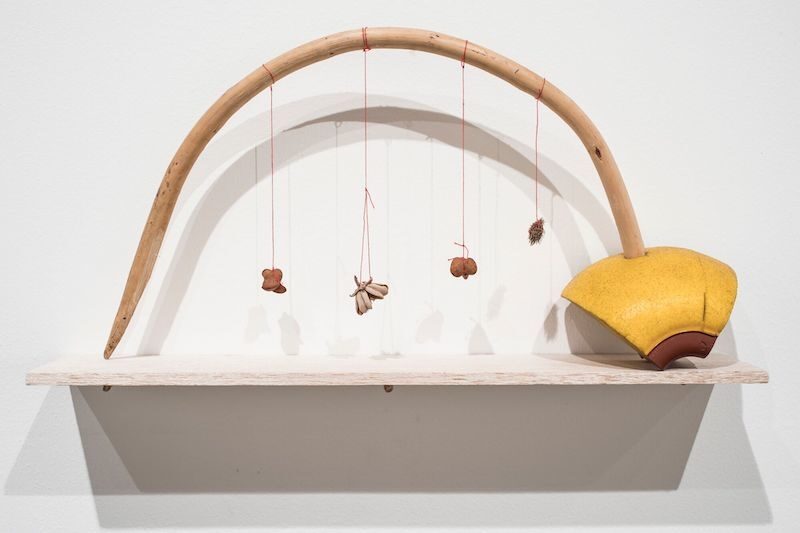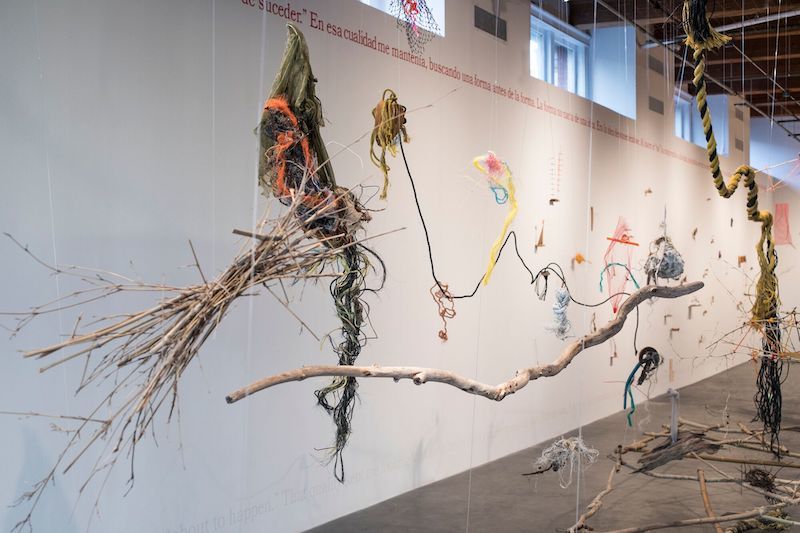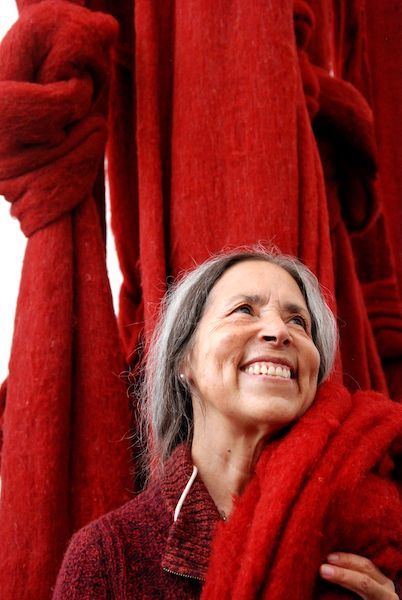The Warnings and Possibilities of What’s “About to Happen”
Review of "About to Happen" at Henry Art Gallery.
Written by TeenTix Newsroom Writer Erin Croom, and edited by Teen Editor Lily Williamson!

“About to Happen” at the University of Washington’s Henry Art Gallery marks the first time Cecilia Vicuña’s collection of sculptures, drawings, films, and other art pieces are exhibited alone in the United States. Vicuña is a Chilean-born artist whose career spans over fifty years, and her unique body of work has only gained relevance as time passes and climate change (often alluded to in her art) worsens. This exhibit combines a wide variety of media, largely composed of repurposed materials, in a unique and visually compelling compilation that invites thoughtful consideration from viewers.
Upon entering the gallery, visitors are greeted by dozens upon dozens of tiny sculptures dotting the walls and a raised platform on the floor. These are “precarios” (“uncertainties” in Spanish), or, as Vicuña sometimes refers to them, “basuritas” (“little garbages”). These tiny masterpieces, pinned to the wall like insect specimens, are entirely made of objects Vicuña collected from the shores of northern Chile, where she grew up. The oldest “precarios” are from 1966, and she has continued to create them in the decades since. Just as other pieces in the room float from the ceiling, the “precarios” seem to swim in the vast white expanses of the walls upon which they are mounted. They range in complexity, from singular pieces of wood to intricate assemblies of thread, netting, and other flotsam. Vicuña’s clever hand has taken seaside trash and created beautiful works of art that are captivating in their detail.

Commanding attention in the center of the spacious gallery is “Balsa Snake Raft to Escape the Flood,” the exhibit’s centerpiece. Dozens of brightly colored shapes are suspended from the ceiling by nearly invisible wires, above a curving ladder of driftwood that floats mere inches above the ground. The many components of the piece include both manmade materials—fraying ropes, plastic netting, and a deflated basketball, for example—as well as organic ones. The gallery air is not quite still, so the pieces sway ever so slightly with a breath of life. “Balsa Snake Raft to Escape the Flood” is ultimately an optimistic piece that sees the possibility of a new purpose for this reclaimed trash; the boundary between “human” and “nature” fades as all work together to survive the dangers of the future. Still, this union is as fragile as the fishing line that establishes their arrangement and keeps them from crashing to the ground.
In 1973, Chile’s socialist president Salvador Allende was overthrown in a US-backed military coup. General Augusto Pinochet—previously the Commander-in-Chief of the Chilean army under Allende—was appointed as leader of Chile by the junta, or committee of military rulers. Pinochet was a brutal dictator who persecuted leftists and other critics. Thousands were executed, and many were tortured and interned. Even more, including Cecilia Vicuña, then twenty-five, were exiled to other countries. Already an established artist, Vicuña continued her work while in exile in London. The brutality of Pinochet’s regime is reflected in her work, not with mirrored ferocity, but rather compassion. Vicuña’s work with discarded objects is allegorical to her attitude towards discarded people, byproducts of the dictatorship. Anyone and anything branded as “useless” is given new life and presented as the savior of the future.

In the rear of the gallery, massive lengths of knotted unspun wool in fiery hues of red and orange dangle from the ceiling. This is “Burnt Quipu,” a piece that memorializes the recent forest fires that have ravaged the West Coast. Viewers are invited to walk through the woolen grove, where these columns of fabric become the trunks of burning trees, and the tragedy is ever more potent. Ancient Incan and other indigenous South American cultures used quipus, or knotted cords, for record-keeping. Vicuna’s reimagining of this ancient language on a much larger scale integrates cultural history with modern events and elevates elements of indigenous culture that have been historically marginalized and ignored. As the nearby works look towards an uncertain future, “Burnt Quipu” serves to honor the mournful past.
Despite very little improvement in the face of a worsening environmental crisis, Vicuña’s art remains optimistic about the future. She approaches the future with the vitality of a much younger artist, coupled with the wisdom from her years of experience. And, to us young people, a positive outlook is sorely needed if we are to deal with the world we inherit.
Lead photo credit: "About to Happen" by Cecilia Vicuña at Henry Art Gallery. Photo by Alex Marks.
The Teen Editorial Staff is made up of 5 teens who curate the review portion of the TeenTix blog and manage the TeenTix Newsroom. More information about the Teen Editorial Staff can be found HERE.
The TeenTix Press Corps promotes critical thinking, communication, and information literacy through criticism and journalism practice for teens. For more information about the Press Corps program see HERE.


